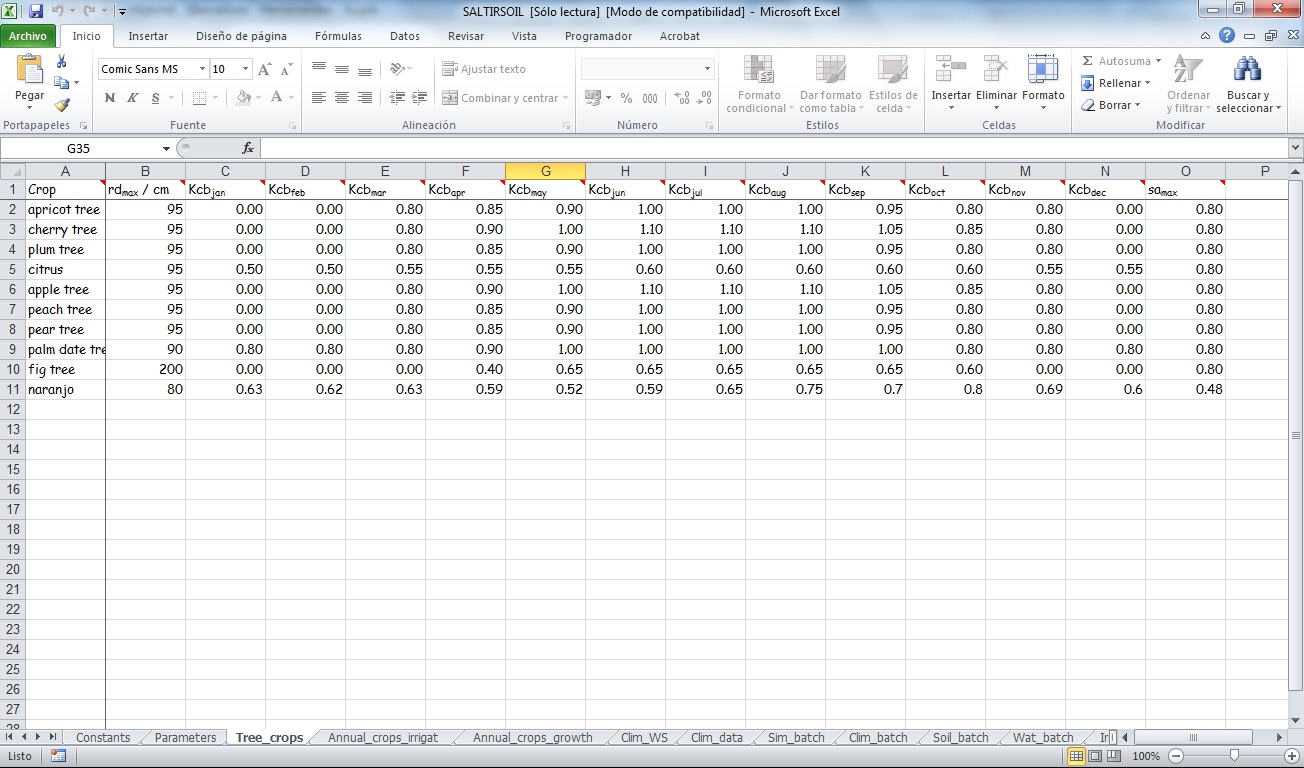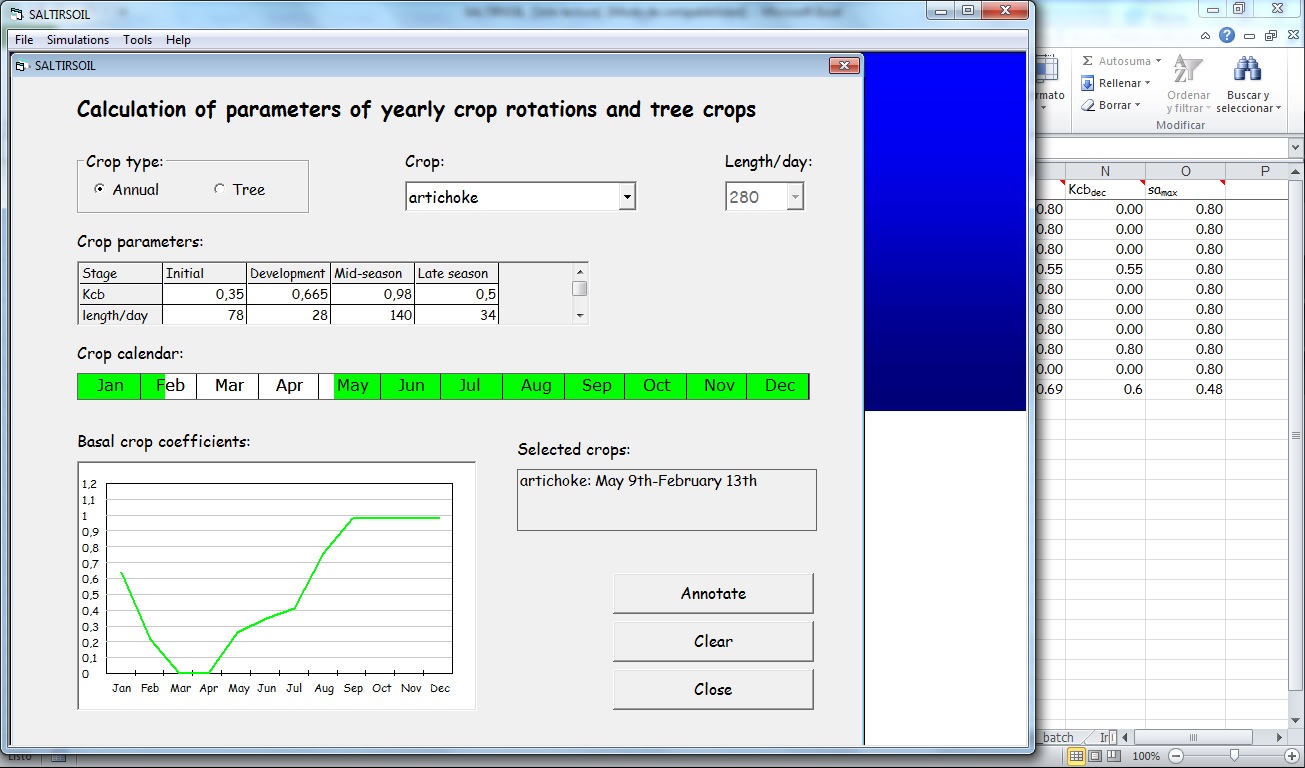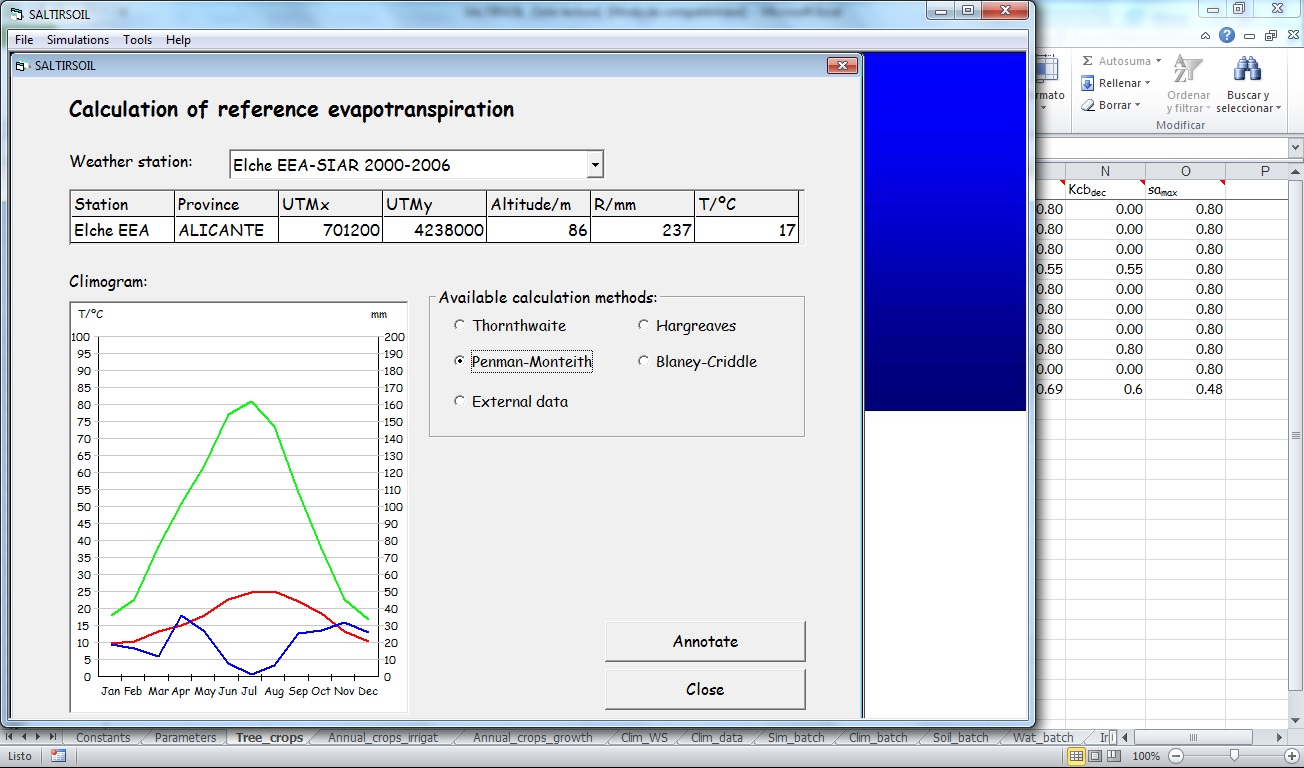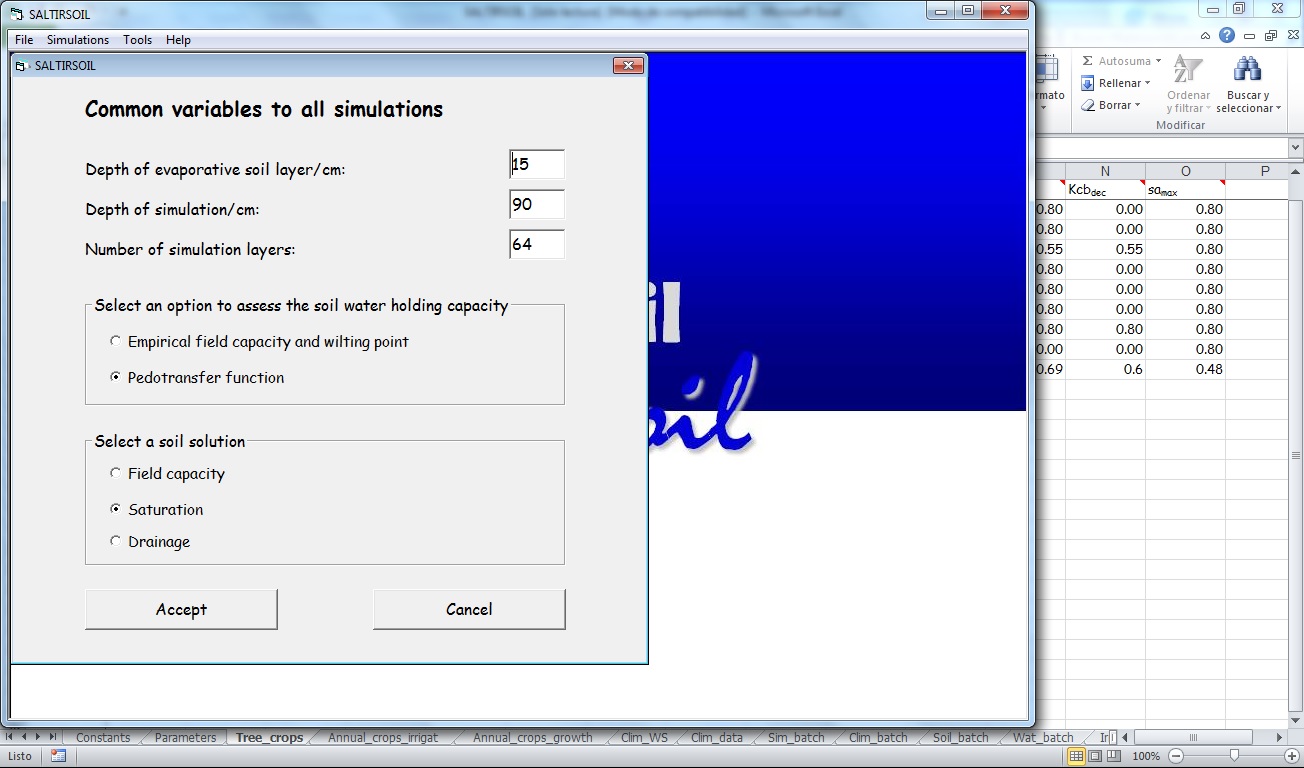SALTIRSOIL: an application to predict soil salinity in irrigated well-drained lands
SALTIRSOIL (SALTs in IRrigated SOILs) is a computer program developed to calculate the ionic composition and electrical conductivity of saline, calcareous and gypsiferous soil solutions in the mid to long term in irrigated well-drained lands. SALTIRSOIL uses climate, soil, crop, irrigation water quality and management data. From the information about rainfall, evapotranspiration and irrigation water amounts and crop management and soil hydrophysical properties, SALTIRSOIL carries out a monthly water balance for a year span. From this balance it calculates a soil solution concentration factor regarding the irrigation water. The major ion composition of the irrigation water is multiplied by the concentration factor leading to the composition of a soil solution away from equilibrium. This composition is the input to the module SALSOLCHEM, integrated within SALTIRSOIL, which calculates the soil solution composition at equilibrium with calcite and gypsum minerals and soil CO2. SALTIRSOIL is written in Microsoft Visual Basic©. The data required to run the simulations must be saved in a Microsoft Excel© spreadsheet workbook with a predetermined structure upon which the application runs. The simulations are batch-run.
The essential steps for running the SALTIRSOIL model are described below.
SALTIRSOIL is copyrighted software by the author, distributed free for research, management and educational purposes and downloadable here.
The SALTIRSOIL_M model has featured several research articles which can be accessed from this page.



